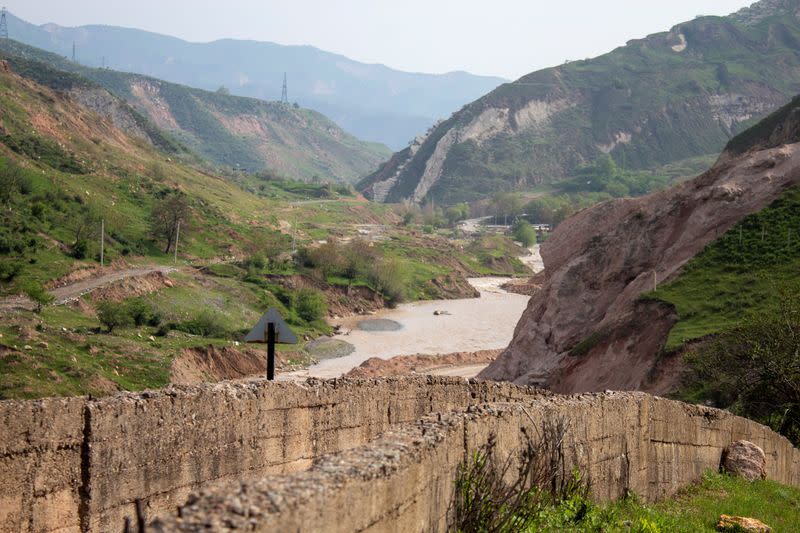Unstable nuclear-waste dams threaten fertile Central Asia heartland

MAILUU-SUU, Kyrgyzstan (Reuters) - Dams holding vast amounts of uranium mine tailings above the fertile Fergana valley in Central Asia are unstable, threatening a possible Chernobyl-scale nuclear disaster if they collapse that would make the region uninhabitable, studies have revealed.
Dams holding some 700,000 cubic meters (185 million gallons) of uranium mine tailings in Kyrgyzstan have become unreliable following a 2017 landslide. A further landslide or earthquake could send their contents into a river system used to irrigate Kyrgyz, Uzbek and Tajik farmlands, the studies at the Soviet-era radioactive waste disposal facility showed. That event would possibly displace millions in those three countries.
The studies, part of a project by the European Commission and the European Bank for Reconstruction and Development to reinforce the facilities, show that the type of waste involved cannot be safely contained in their current locations and needs to be moved away from the banks of the Mailuu-Suu river.
The Fergana valley, where the contaminated water would go, is the most densely populated area in Central Asia with 16 million people, many of whom are involved in the cultivation of cotton, rice, grains, fruit and vegetables.
"If a landslide causes the river to burst, the waste from two mine dumps will enter the water," says Gulshair Abdullayeva, a manager of the Mailuu-Suu radiology lab.
"The environmental disaster would almost be comparable with Chernobyl."
Studies have shown that the waste in those dumps is liquid, making it more hazardous, and it could flow into the river in the event of a strong earthquake, says Sebastian Hess, an engineer with German firm G.E.O.S. contracted by the Kyrgyz government.
"That would be a horrible catastrophe," he said. "This water is used to irrigate fields which means agricultural produce would be contaminated."
The dams' foundations were weakened by water during a 2017 landslide which raised the river's water level, bring it closer to the tailings, engineers have said.
The Bishkek government and G.E.O.S. estimate that 22-25 million euros would be needed to move the waste from the two unsafe locations to one further away from the river.
The area near the town of the Mailuu-Suu, one of the world's biggest uranium ore dumps, was developed by the Soviet Union between the 1940s and 1960s. A factory in the town also processed uranium ore from other nearby mines.
(Reporting by Aigerim Turgunbaeva; Writing by Olzhas Auyezov; Editing by Bernadette Baum)

